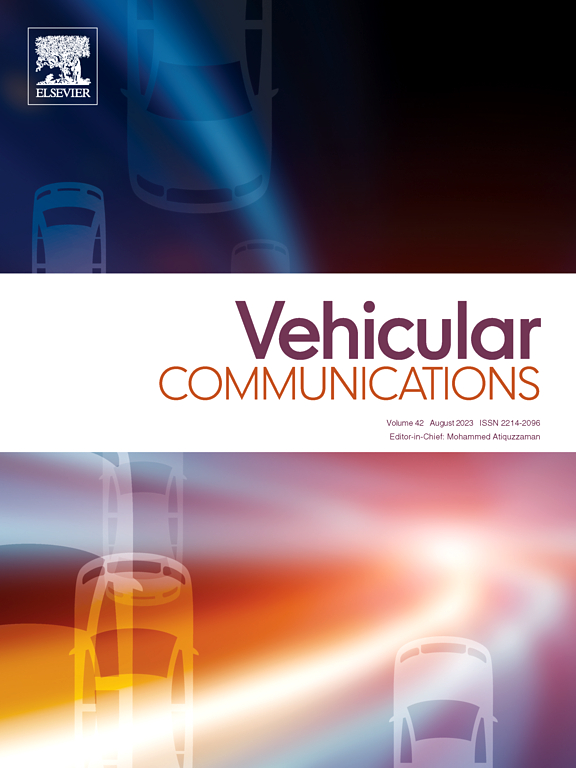A question-centric review on DRL-based optimization for UAV-assisted MEC sensor and IoT applications, challenges, and future directions
IF 6.5
2区 计算机科学
Q1 TELECOMMUNICATIONS
引用次数: 0
Abstract
Unmanned Aerial Vehicle (UAV)-assisted Internet of Things (IoT) applications vary widely including data monitoring, data collection and analysis, intelligent navigation and object tracking, surveillance and emergency response, vehicular and intelligent transport, and agricultural, marine, and photogrammetry. Mobile Edge Computing (MEC)-based UAV-assisted IoT networks enable resource-constrained mobile or IoT devices to offload computationally demanding tasks to UAVs or edge nodes with more computing power in order to improve battery consumption, performance, or Quality of Service. UAV-assisted IoT applications generally require a lot of precision for efficient UAV control involving UAV movement and position optimization and Deep Reinforcement Learning (DRL) has recently been identified as one of the most prominent techniques for facilitating this and optimizing of the terrestrial network performance, thus improving the operation of these applications. This paper aims to answer twelve important research questions relating to the research on DRL for Mobile Edge Computing (MEC)-based UAV-assisted sensor and IoT applications from 47 systematically selected articles. The questions cover a variety of topics including the UAV-assisted MEC IoT applications studied, variants of deployed DRL, the purpose of DRL, Markov Decision Processes (MDPs) components, unique network architectural features, environments and integrated technologies, role of UAVs, optimization constraints, joint optimization frameworks, energy-management techniques, metrics examined, benchmark algorithms and performance results as well as identified probable future considerations based on the review. Lastly, the challenges and future directions of DRL application in UAV-assisted MEC systems are discussed. This paper aims to provide both communication generalists and optimization specialists with a comprehensive understanding of the research landscape in this field.
以问题为中心,综述了基于drl的无人机辅助MEC传感器和物联网应用优化、挑战和未来方向
无人机(UAV)辅助物联网(IoT)应用范围广泛,包括数据监控、数据收集和分析、智能导航和目标跟踪、监视和应急响应、车辆和智能交通、农业、海洋和摄影测量。基于移动边缘计算(MEC)的无人机辅助物联网网络使资源受限的移动或物联网设备能够将计算要求高的任务卸载给具有更多计算能力的无人机或边缘节点,以提高电池消耗、性能或服务质量。无人机辅助物联网应用通常需要非常精确的无人机控制,包括无人机运动和位置优化,深度强化学习(DRL)最近被确定为促进这一点和优化地面网络性能的最突出技术之一,从而改善了这些应用的运行。本文旨在从系统选择的47篇文章中回答与基于移动边缘计算(MEC)的无人机辅助传感器和物联网应用的DRL研究相关的12个重要研究问题。问题涵盖了各种主题,包括无人机辅助MEC物联网应用研究,部署DRL的变种,DRL的目的,马尔可夫决策过程(mdp)组件,独特的网络架构特征,环境和集成技术,无人机的作用,优化约束,联合优化框架,能源管理技术,指标检查,基准算法和性能结果,以及基于审查确定的可能的未来考虑因素。最后,讨论了DRL在无人机辅助MEC系统中的应用面临的挑战和未来的发展方向。本文旨在为通信通才和优化专家提供对该领域研究前景的全面了解。
本文章由计算机程序翻译,如有差异,请以英文原文为准。
求助全文
约1分钟内获得全文
求助全文
来源期刊

Vehicular Communications
Engineering-Electrical and Electronic Engineering
CiteScore
12.70
自引率
10.40%
发文量
88
审稿时长
62 days
期刊介绍:
Vehicular communications is a growing area of communications between vehicles and including roadside communication infrastructure. Advances in wireless communications are making possible sharing of information through real time communications between vehicles and infrastructure. This has led to applications to increase safety of vehicles and communication between passengers and the Internet. Standardization efforts on vehicular communication are also underway to make vehicular transportation safer, greener and easier.
The aim of the journal is to publish high quality peer–reviewed papers in the area of vehicular communications. The scope encompasses all types of communications involving vehicles, including vehicle–to–vehicle and vehicle–to–infrastructure. The scope includes (but not limited to) the following topics related to vehicular communications:
Vehicle to vehicle and vehicle to infrastructure communications
Channel modelling, modulating and coding
Congestion Control and scalability issues
Protocol design, testing and verification
Routing in vehicular networks
Security issues and countermeasures
Deployment and field testing
Reducing energy consumption and enhancing safety of vehicles
Wireless in–car networks
Data collection and dissemination methods
Mobility and handover issues
Safety and driver assistance applications
UAV
Underwater communications
Autonomous cooperative driving
Social networks
Internet of vehicles
Standardization of protocols.
 求助内容:
求助内容: 应助结果提醒方式:
应助结果提醒方式:


